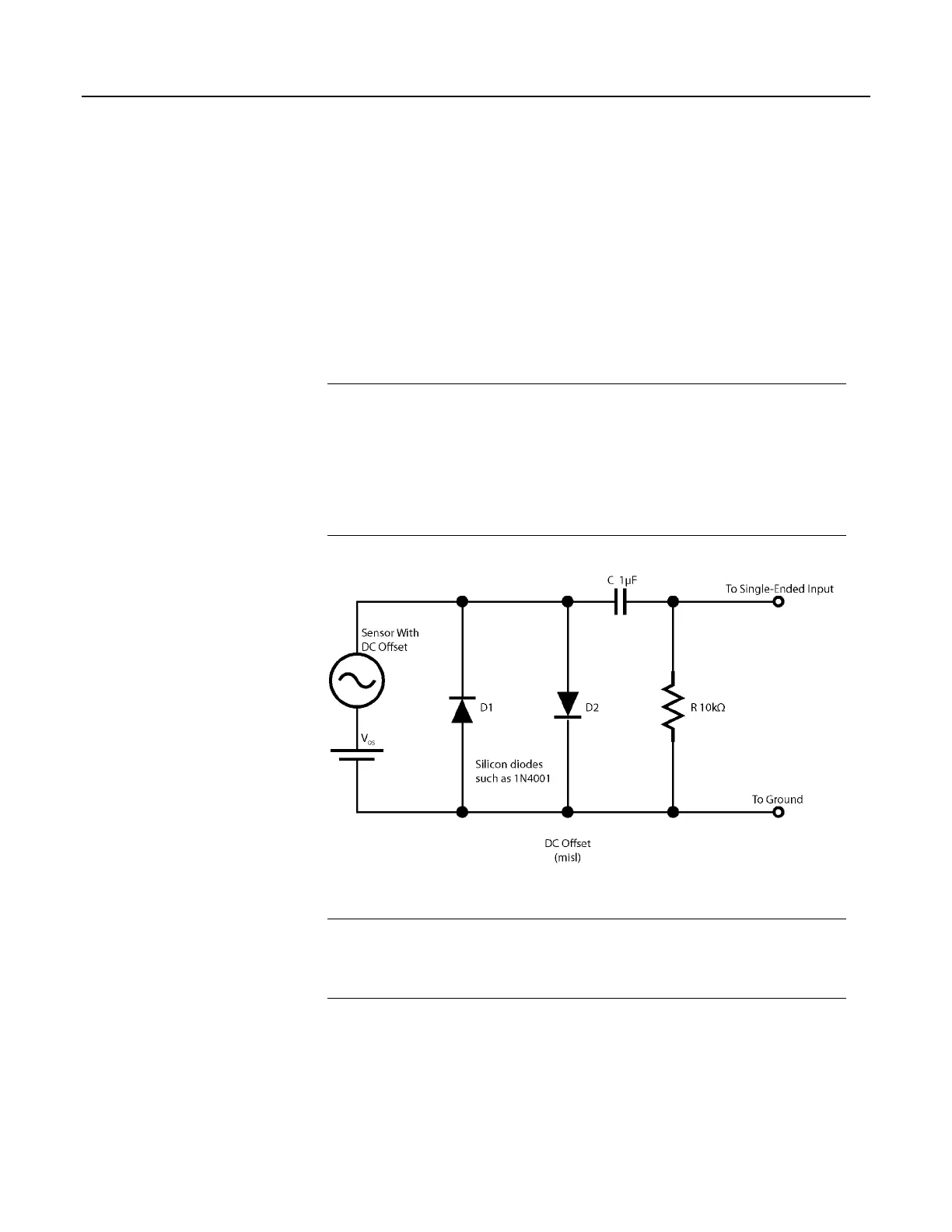signals, but it is not recommended for small amplitude sensor signals. For sensor
amplitudes less than 20 mV peak-to-peak, a dc blocking capacitor is
recommended to center the signal at CR1000 ground (threshold = 0) because of
offset voltage drift along with limited accuracy (±10 mV) and resolution (1.2 mV)
of a threshold other than zero. Figure Input Conditioning Circuit for Period
Averaging
(p. 361) shows an example circuit.
The minimum pulse-width requirements increase (maximum frequency decreases)
with increasing gain. Signals larger than the specified maximum for a range will
saturate the gain stages and prevent operation up to the maximum specified
frequency. As shown, back-to-back diodes are recommended to limit large
amplitude signals to within the input signal ranges.
Caution Noisy signals with slow transitions through the voltage threshold have
the potential for extra counts around the comparator switch point. A voltage
comparator with 20 mV of hysteresis follows the voltage gain stages. The
effective input-referred hysteresis equals 20 mV divided by the selected voltage
gain. The effective input referred hysteresis on the ± 25 mV range is 2 mV;
consequently, 2 mV of noise on the input signal could cause extraneous counts.
For best results, select the largest input range (smallest gain) that meets the
minimum input signal requirements.
Figure 95. Input Conditioning Circuit for Period Averaging
8.1.5 Vibrating-Wire Measurements — Details
Related Topics:
• Vibrating-Wire Measurements — Specifications
• Vibrating-Wire Measurements — Overview
(p. 71)
• Vibrating-Wire Measurements — Details
(p. 361)
The CR1000 can measure vibrating-wire or vibrating-strip sensors, including
strain gages, pressure transducers, piezometers, tilt meters, crack meters, and load
cells. These sensors are used in structural, hydrological, and geotechnical
applications because of their stability, accuracy, and durability. The CR1000 can
measure vibrating-wire sensors through specialized interface modules. More
sensors can be measured by using multiplexers (see Analog Multiplexers
(p. 646) ).
361

